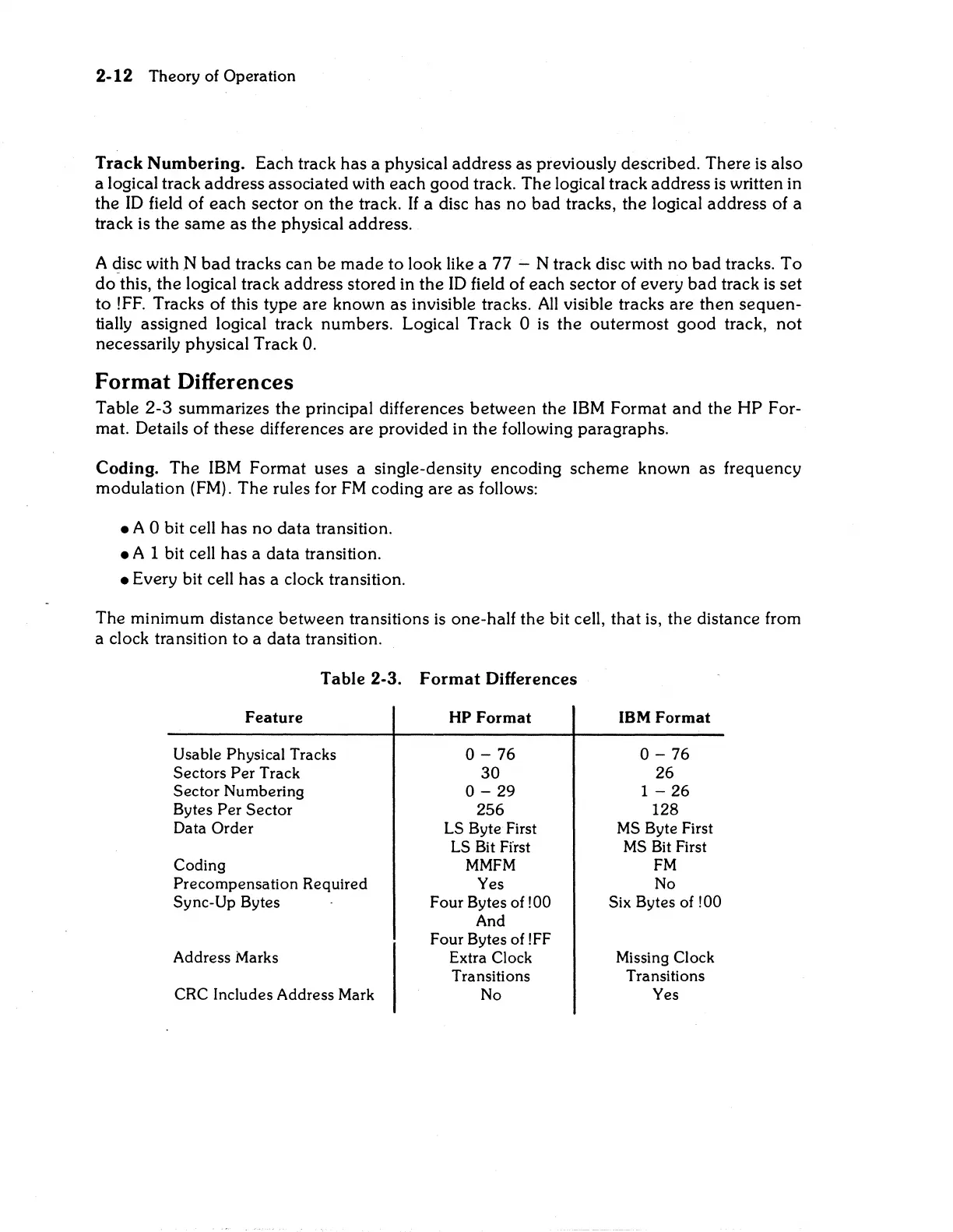2-12 Theory of Operation
Track
Numbering.
Each track has a physical address as previously described. There
is
also
a logical track address associated with each good track. The logical track address
is
written in
the
ID
field of
each
sector on the track.
If
a disc has no bad tracks, the logical address of a
track is the same as the physical address.
A
4isc with N
bad
tracks can
be
made
to look like a 77 - N track disc with no
bad
tracks.
To
do
this, the logical track address stored in the
ID
field of each sector of every
bad
track
is
set
to
!FF.
Tracks of this type are known as invisible tracks.
All
visible tracks are then
sequen-
tially assigned logical track numbers. Logical Track 0
is
the outermost good track,
not
necessarily physical Track
O.
Format
Differences
Table
2-3
summarizes
the
principal differences between the
IBM
Format
and
the HP For-
mat. Details of these differences are provided in the following paragraphs.
Coding. The
IBM
Format uses a single-density encoding scheme known as frequency
modulation
(FM).
The rules for
FM
coding are as follows:
• A 0 bit cell has no data transition.
• A 1 bit cell has a data transition.
• Every bit cell has a clock transition.
The minimum distance between transitions
is
one-half the bit cell, that is, the distance from
a clock transition to a
data
transition.
Table 2-3.
Format
Differences
Feature
HP
Format
IBM
Format
Usable Physical Tracks
0-76
0-76
Sectors
Per
Track
30
26
Sector Numbering
0-29
1 - 26
Bytes
Per
Sector
256
128
Data
Order
LS Byte First
MS
Byte First
LS Bit
Frrst
MS
Bit First
Coding
MMFM
FM
Precompensation Required
Yes
No
Sync-Up Bytes
Four Bytes of
roo
Six Bytes of ! 00
And
Four Bytes of !FF
Address Marks Extra Clock Missing Clock
Transitions
Transitions
CRC Includes Address Mark No
Yes

